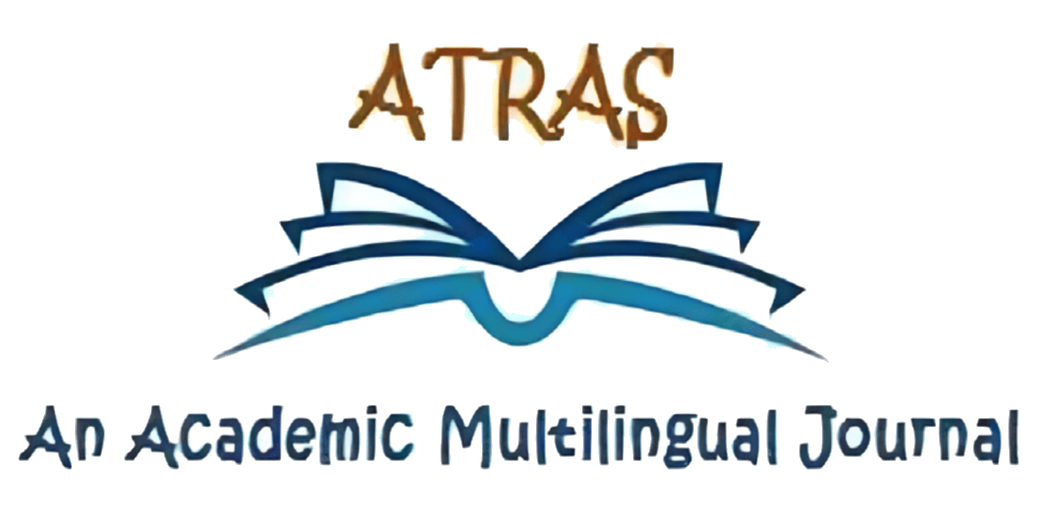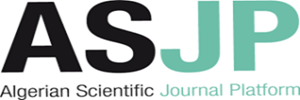Artificial Intelligence in Education: A Comprehensive Bibliometric Study on Scopus (2010-2024)
Samira GUECHAIRI
University of Blida2 Lounici Ali, Algeria
s.guechairi@univ-blida2.dz
https://orcid.org/0000-0002-7680-8925
Abstract
This study aims to rigorously analyse publications on the use of artificial intelligence in education from 2010 to 2024 using data from the Scopus database. The significance of this study lies in its potential to elucidate trends, patterns, and the impact of AI research in the educational field, offering valuable insights for researchers, educators, and policymakers. The study employs bibliometric methods and tools, specifically Bibliometrix for data analysis and VOSviewer for visualization. An examination of 9,564 papers reveals a significant rise in AI research, peaking in 2023, with notable contributions from the Social Sciences. Researchers Wang Y, Liu Y, and Zhang Y, along with the journals “Sustainability” and “Artificial Intelligence Review,” are identified as key contributors. Highly cited articles focus on algorithm transparency and deep learning. China and the USA are highlighted as leading countries in AI development, indicating substantial state investment. The study comprehensively analyses AI’s role in education, emphasizing practical applications and interdisciplinary cooperation, and proposes future research directions, including ethical considerations and qualitative impact assessments. The findings underscore AI’s evolving nature and transformative potential in education, advocating for ongoing investment and innovation.
Keywords: Artificial Intelligence, bibliometric analysis, education, Bibliometrix , VOSviewer, Scopus
DOI:
https://doi.org/10.70091/atras/AI.28
How to Cite this Paper :
Guechairi, S. (2024). Artificial Intelligence in Education: A Comprehensive Bibliometric Study on Scopus (2010-2024). Atras Journal, 5(Special Issue), 445-463.
References:
Ahmad et al. (2023). Data-Driven Artificial Intelligence in Education: A Comprehensive Review. IEEE Transactions on Learning Technologies, 17, 12–31. https://doi.org/10.1109/TLT.2023.3314610
Akhmadieva, R. S. et al. (2023). Artificial intelligence in science education: A bibliometric review. Contemporary Educational Technology, 15(4), ep460. https://doi.org/10.30935/cedtech/13587
AlKanaan, H. M. N. (2022). Awareness Regarding the Implication of Artificial Intelligence in Science Education among Pre-Service Science Teachers. International Journal of Instruction, 15(3), 895–912.
UNESCO, & International Conference on Artificial Intelligence and Education, P. E. in the A. E. L. the L. (2019). Beijing Consensus on Artificial Intelligence and Education. https://unesdoc.unesco.org/ark:/48223/pf0000370967?posInSet=2&queryId=N-EXPLORE-a14d39fa-4452-4248-b486-ce88899e2b6e
Bircan and Salah (2022). A Bibliometric Analysis of the Use of Artificial Intelligence Technologies for Social Sciences. Mathematics, 10(23), Article 23. https://doi.org/10.3390/math10234398
Burrell, J. (2016). How the machine ‘thinks’: Understanding opacity in machine learning algorithms. In Big Data and Society (Vol. 3, Issue 1). https://doi.org/10.1177/2053951715622512
Chen et al. (2020). Artificial Intelligence in Education: A Review. IEEE Access, 8, 75264–75278. https://doi.org/10.1109/ACCESS.2020.2988510
Donthu et al. 2021. How to conduct a bibliometric analysis: An overview and guidelines. Journal of Business Research, 133, 285–296. https://doi.org/10.1016/j.jbusres.2021.04.070
Hjørland & Nicolaisen, 2005. Bradford’s Law of Scattering: Ambiguities in the Concept of “Subject”. In F. Crestani & I. Ruthven (Eds.), Context: Nature, Impact, and Role (Vol. 3507, pp. 96–106). Springer Berlin Heidelberg. https://doi.org/10.1007/11495222_9
Ivanova et al. (2024). Unveiling Insights: A Bibliometric Analysis of Artificial Intelligence in Teaching. Informatics, 11(1), 10. https://doi.org/10.3390/informatics11010010
Jaleniauskienė et al. (2023). Artificial Intelligence in Language Education: A Bibliometric Analysis. Sustainable Multilingualism, 23(1), 159–194. https://doi.org/10.2478/sm-2023-0017
Jammeli et al. (2024). The Impact of AI Tools in the Education Environment. Int. Conf. Inf. Educ. Technol., ICIET, 208–214. https://doi.org/10.1109/ICIET60671.2024.10542830
Kaban, A. (2023). Artificial Intelligence in Education: A Science Mapping Approach. International Journal of Education in Mathematics, Science and Technology, 11(4), Article 4. https://doi.org/10.46328/ijemst.3368
Kavitha et al. (2024). Artificial Intelligence in Higher Education: A Bibliometric Approach. European Journal of Educational Research, 13(3), 1121–1137. https://doi.org/10.12973/eu-jer.13.3.1121
Ke et al., (2017). Short-term forecasting of passenger demand under on-demand ride services: A spatio-temporal deep learning approach. In Transportation Research Part C: Emerging Technologies (Vol. 85, pp. 591–608). https://doi.org/10.1016/j.trc.2017.10.016
Lee, K., et al., (2018). Speeding Up Distributed Machine Learning Using Codes. In IEEE Transactions on Information Theory (Vol. 64, Issue 3, pp. 1514–1529). https://doi.org/10.1109/TIT.2017.2736066
Li, K. C., & Wong, B. T.-M. (2023). Artificial intelligence in personalised learning: A bibliometric analysis. Interactive Technology and Smart Education, 20(3), 422–445. https://doi.org/10.1108/ITSE-01-2023-0007
Liu, J. et al. (2024). A bibliometric analysis of generative AI in education: Current status and development. Asia Pacific Journal of Education, 44(1), 156–175. https://doi.org/10.1080/02188791.2024.2305170
Lusci et al., 2013. Deep architectures and deep learning in chemoinformatics: The prediction of aqueous solubility for drug-like molecules. Journal of Chemical Information and Modeling, 53(7), 1563–1575. https://doi.org/10.1021/ci400187y
Maphosa, V., & Maphosa, M. (2021). The Trajectory of Artificial Intelligence Research in Higher Education: A Bibliometric Analysis and Visualisation. 2021 International Conference on Artificial Intelligence, Big Data, Computing and Data Communication Systems (icABCD), 1–7. https://doi.org/10.1109/icABCD51485.2021.9519368
Metli, A. (2023). Articles on Education and Artificial Intelligence: A Bibliometric Analysis. Journal of Social Sciences And Education, 6(Education Special Issue), Article Education Special Issue. https://doi.org/10.53047/josse.1352197
Mongeon, P., & Paul-Hus, A. (2016). The journal coverage of Web of Science and Scopus: A comparative analysis. Scientometrics, 106(1), 213–228. https://doi.org/10.1007/s11192-015-1765-5
Murphy, R. F. (2019). Artificial Intelligence Applications to Support K–12 Teachers and Teaching: A Review of Promising Applications, Challenges, and Risks. RAND Corporation. https://www.rand.org/pubs/perspectives/PE315.html
Nguyen, G. et al. (2019). Machine Learning and Deep Learning frameworks and libraries for large-scale data mining: A survey. Artificial Intelligence Review, 52(1), 77–124. https://doi.org/10.1007/s10462-018-09679-z
Polson, N. G., & Sokolov, V. O. (2017). Deep learning for short-term traffic flow prediction. In Transportation Research Part C: Emerging Technologies (Vol. 79, pp. 1–17). https://doi.org/10.1016/j.trc.2017.02.024
Popenici, S. A. D., & Kerr, S. (2017). Exploring the impact of artificial intelligence on teaching and learning in higher education. In Research and Practice in Technology Enhanced Learning, 12(1),p.1-13. https://doi.org/10.1186/s41039-017-0062-8
Prahani et al. (2022). Artificial Intelligence in Education Research During the Last Ten Years: A Review and Bibliometric Study. International Journal of Emerging Technologies in Learning, 17(8), 169–188. https://doi.org/10.3991/ijet.v17i08.29833
Qi, B. W. (2019). Analysis of the Application of Artificial Intelligence in the Classroom. Journal of Physics: Conference Series, 1345(4). https://doi.org/10.1088/1742-6596/1345/4/042075
Saputra et al., (2023). Integration of Artificial Intelligence in Education: Opportunities, Challenges, Threats and Obstacles. A Literature Review. Indonesian Journal of Computer Science, 12. https://doi.org/10.33022/ijcs.v12i4.3266
Sysoyev, P. V. (2023). Artificial Intelligence in Education: Awareness, Readiness and Practice of Using Artificial Intelligence Technologies in Professional Activities by University Faculty. Vysshee Obrazovanie v Rossii, 32(10), 9–33. https://doi.org/10.31992/0869-3617-2023-32-10-9-33
Talan, T. (2021). Artificial Intelligence in Education: A Bibliometric Study. International Journal of Research in Education and Science, 7(3), Article 3. https://doi.org/10.46328/ijres.2409
Triansyah et al. (2023) . Bibliometric Analysis: Artificial Intelligence (AI) in High School Education. Jurnal Imiah Pendidikan Dan Pembelajaran, 7(1), 112–123. https://doi.org/10.23887/jipp.v7i1.59718
Wu et al. (2018). A hybrid deep learning based traffic flow prediction method and its understanding. In Transportation Research Part C: Emerging Technologies (Vol. 90, pp. 166–180). https://doi.org/10.1016/j.trc.2018.03.001
Yadav, A., & Vishwakarma, D. K. (2020). Sentiment analysis using deep learning architectures: A review. In Artificial Intelligence Review (Vol. 53, Issue 6, pp. 4335–4385). https://doi.org/10.1007/s10462-019-09794-5
You et al. (2022). Deep Learning Based a Novel Method of Classroom Behavior Recognition. IEEE 2nd International Conference on Educational Technology, ICET, 155–159. https://doi.org/10.1109/ICET55642.2022.9944414
Zhang, K., & Aslan, A. B. (2021). AI technologies for education: Recent research & future directions. Computers and Education: Artificial Intelligence, 2, 100025. https://doi.org/10.1016/j.caeai.2021.100025
Zhao, Z. et al. (2017). LSTM network: A deep learning approach for Short-term traffic forecast. In IET Intelligent Transport Systems, 11(2), 68–75. https://doi.org/10.1049/iet-its.2016.0208
Zhu, Y., Yang, Q., & Mao, X. (2023). Global Trends in the Study of Smart Healthcare Systems for the Elderly: Artificial Intelligence Solutions. International Journal of Computational Intelligence Systems, 16(1), 105. https://doi.org/10.1007/s44196-023-00283-w
Zupic, I., & Čater, T. (2015). Bibliometric Methods in Management and Organization. Organizational Research Methods, 18(3), 429–472. https://doi.org/10.1177/1094428114562629

Copyright for all articles published in ATRAS belongs to the author. The authors also grant permission to the publisher to publish, reproduce, distribute, and transmit the articles. ATRAS publishes accepted papers under the Creative Commons Attribution-NonCommercial 4.0 International (CC BY-NC 4.0) License. Authors submitting papers for publication in ATRAS agree to apply the CC BY-NC 4.0 license to their work. For non-commercial purposes, anyone may copy, redistribute material, remix, transform, and construct material in any media or format, provided that the terms of the license are observed and the original source is properly cited.







































































